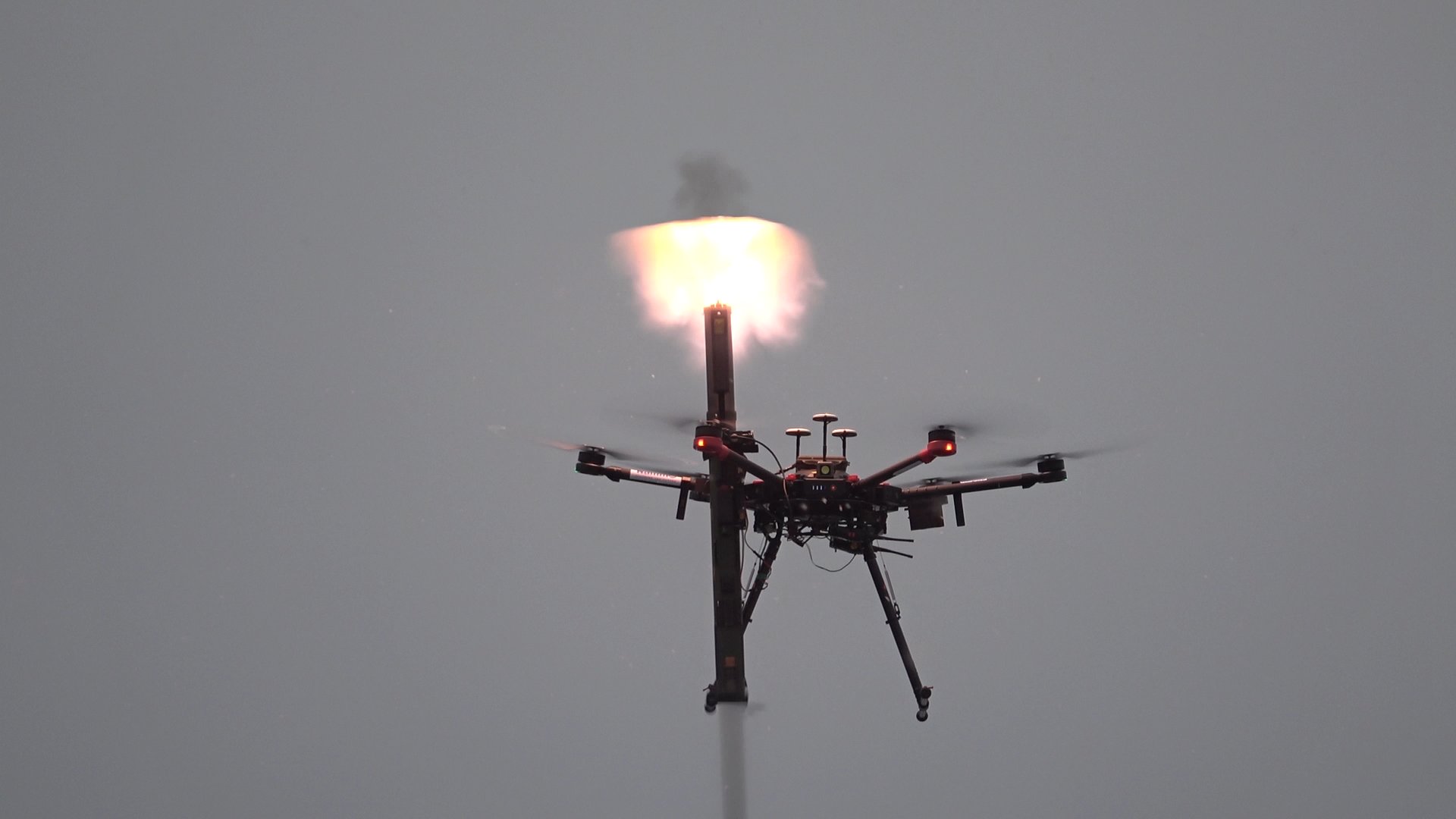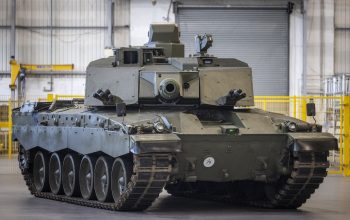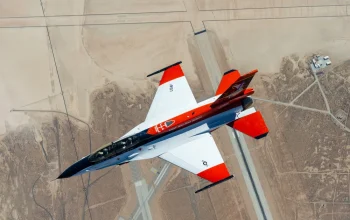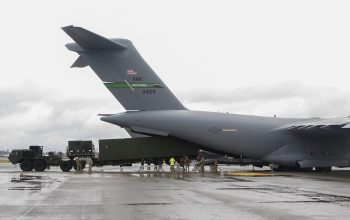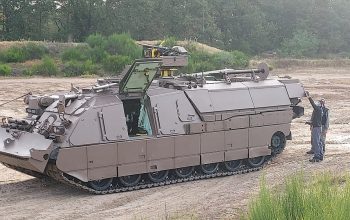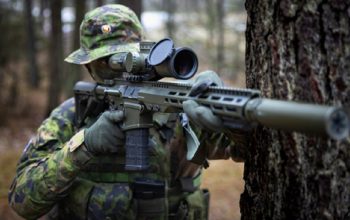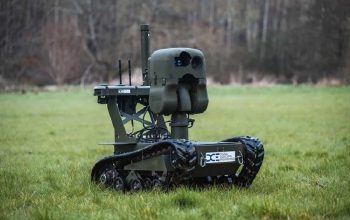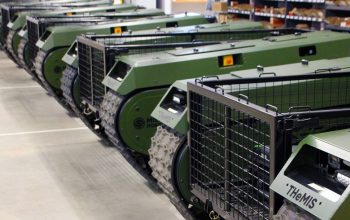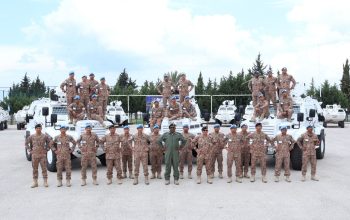Norwegian defense company Nammo is pleased to announce that the company is working on a drone-mounted M72 concept. The company has for several years been working on a concept where the M72 Light Anti-Tank Weapon (LAW) is mounted on a drone. The result is a flexible and powerful anti-vehicle or anti-tank weapon that can be operated remotely. While most variants have a maximum effective range around 350 meters, the new drone concept opens up several new possibilities for versatile use and much longer ranges. This has a maximum range of around 3-4 kilometers, but with improved signal strength, the company is experimenting with ranges up to 50 km.
A top attack weapon is designed to attack armoured vehicles from above as a form of plunging fire, as the armour is usually thinnest on the top of the vehicle. Ideally, it will penetrate perpendicular to the attacked surface. The device may be delivered by an anti-tank guided missile, mortar or artillery shell, or even an emplaced munition such as a mine. This opens up both a “top attack” option against more heavily armored targets, even up to main battle tanks, while at the same time removing operators from the danger zone. The top attack concept is fairly new and was first put into service by the Swedish in 1988 with the Bofors RBS 56 BILL top-attack anti-tank missile.

The M72 drone concept is also a low-cost concept that does not rely on GPS or similar to function. With a degree of automation, the number of operators can be kept at a reasonable level, and the light anti-tank weapon / drone combination can likely operate in so-called swarms. Compared to conventional anti-tank missiles, this can be an effective and inexpensive solution against armored forces. M72 variants meant to be used against armored targets can penetrate at least 450mm of steel.
The M72 is a 66mm caliber single use light anti-tank weapon effective against a range of targets such as armored vehicles, personnel, lightly fortified structures, or similar. The M72 is qualified and in use by a wide range of armed forces in several (mostly NATO) countries and offers a good combination of low weight and heavy firepower. In a regular usage scenario, it is fired from the shoulder of the operator. he M72 LAW was issued as a prepackaged round of ammunition. Improvements to the launcher and differences in the ammunition were differentiated by a single designation. The original M72 warhead penetrated 5 centimeters(2 inches) of armor.
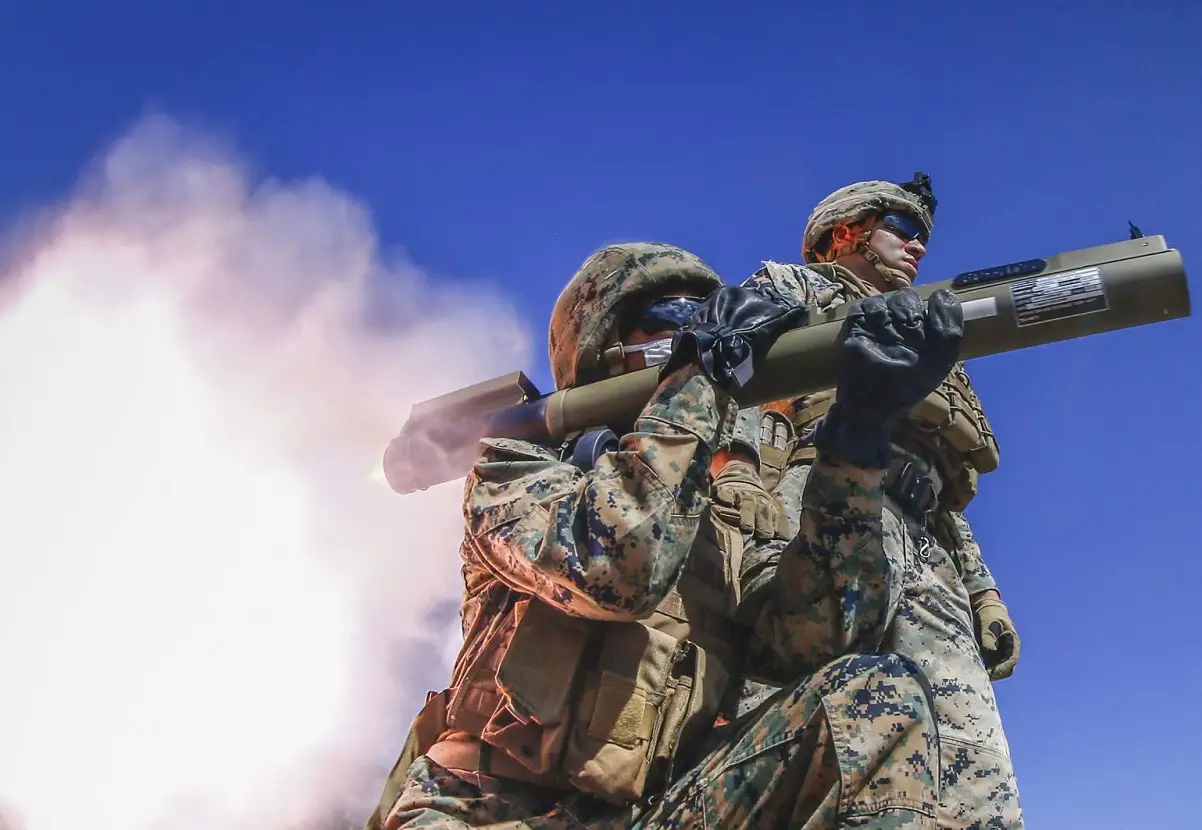
The weapon consists of a rocket within a launcher consisting of two tubes, one inside the other. While closed, the outer assembly serves as a watertight container for the rocket and the percussion-cap firing mechanism that activates the rocket. The outer tube contains the trigger, the arming handle, front and rear sights, and the rear cover. The inner tube contains the channel assembly, which houses the firing pin assembly, including the detent lever. The rocket motor burns completely before leaving the mouth of the launcher, producing a backblast of gases around 1,400 °F (760 °C). The rocket propels the 66-mm warhead forward without significant recoil.
The M72 LAW (Light Anti-Tank Weapon, also referred to as the Light Anti-Armor Weapon or LAW as well as LAWS: Light Anti-Armor Weapons System) is a portable one-shot 66-mm unguided anti-tank weapon. The solid rocket propulsion unit was developed in the newly formed Rohm and Haas research laboratory at Redstone Arsenal in 1959, then the full system was designed by Paul V. Choate, Charles B. Weeks, Frank A. Spinale, et al. at the Hesse-Eastern Division of Norris Thermadore. American production of the weapon began by Hesse-Eastern in 1963, and was terminated by 1983; currently it is produced by Nammo Raufoss AS in Norway and their subsidiary Nammo Talley, Inc. in Arizona.
–


